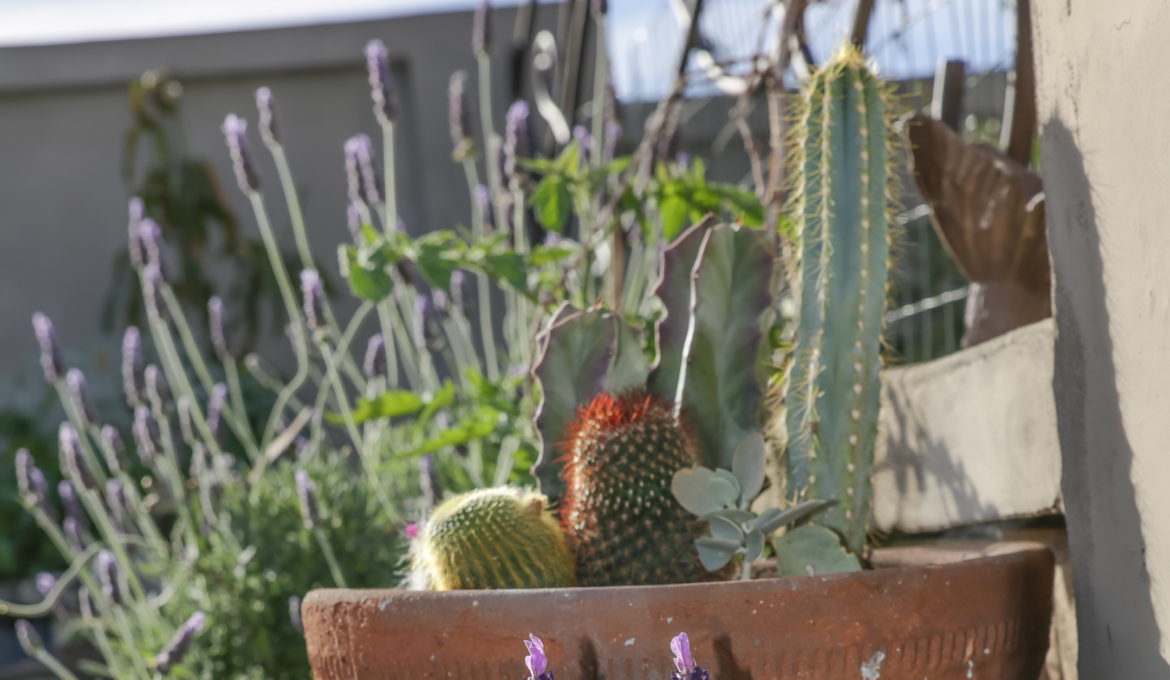We have not had a cool winter. As a matter of fact, the weather has been 10°F above normal this winter. If this is any indication of what is to come, we may once again be seeing 125°F in June and another long, hot summer. Concern for our landscape plants is paramount in all of our minds…what survived last summer may not survive this summer. Last summer’s highest mortality rate was with pygmy palms, citrus trees, and agaves/aloes. Let’s see what we can do to protect our plants from the scorching heat this upcoming season.
IRRIGATION
Not all plants have the same water requirements. Irrigation lines often have multiple plants on just one time zone. Because of this, it is necessary to realize which plants require the most amount of water and then adjust the others accordingly. For example: if you have a citrus tree on the same irrigation line as a sage, lantana, bird of paradise or cactus, you will need to adjust the emitters so that the citrus tree receives more water than the native plants. As always, it is advised that you water less often, but for a longer duration of time. This allows the water to percolate into the soil and root zone and not just lay on top. It is important to realize that citrus is not native to Lake Havasu and requires the most amount of water during the summer, and even with deep watering, it can still go under stress with excessive heat.
Our native plants, on the other hand, will survive with minimal irrigation, along with cacti, aloes, and agaves. These plants go into dormancy mode when temperatures reach 105°F – 110°F to protect themselves. The loss of aloes and agaves this last summer was due to root rot by overwatering. Setting watering days is dependent on your soil conditions. Sandy soil may require more watering days, while clay soil requires less days. Depending on your timer you may be restricted to programming ability.
MULCHING
Placing mulch around sensitive plants will help keep the soil cool and hold in the moisture. Pulling gravel away from the root zone of sago palms and roses and placing mulch around them will help protect their roots. Placing mulch around your citrus trees will not harm them either.
PROTECTIVE COVERING
Protecting “newly” planted sensitive plants with a shade cloth will help them through the summer; HOWEVER, once the plant is established, it is advised not to continue the protection. When constructing the protective covering, allow air circulation around the plant, you do not want to create a sauna and boil the plant. Having a covering over roses is essential and should be done every year. Wrapping shade cloth around a saguaro is not recommended. Once you start this practice you will have to continue to do so.
ADDITIONAL TIPS
- Summertime is the best time to plant palms. They love the warm soil.
- Fertilizing is not recommended until our temperature recedes to under 100°F.
- Pruning should be left alone unless there is a safety issue.
- If chlorosis is showing on leaves (yellow leaves while veins remain green) you can apply chelated iron. This is true for anytime of the year.
- Plants have tendency to wilt in the late afternoon. Additional water may not be necessary so wait until the following morning to see if the plant is still wilted.
- I purchased a water meter to test the moisture in my soil.
Preparing for a long, hot summer will allow you ease of mind with your landscape. Check your irrigation lines, valves, and emitters now so that any necessary repairs can be done prior to the heat. If you are leaving for the summer, remember to put new batteries in your irrigation controller. If we have a monsoon, we could lose power and therefore your controller could lose its memory. Having a neighbor keeping an eye on your property will also give you peace of mind. High winds, monsoon rains, and broken water pipes are just a few of the things that Mother Nature can bring to us. Since “gardening” is not required here in the summertime, sit back on that lounge chair in the pool or hit the lake….it is time to relax!


